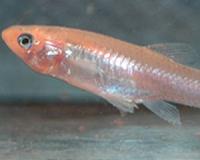| . |  |
. |
Copenhagen, Denmark (SPX) May 12, 2011 The acidification of the world's oceans could have major consequences for the marine environment. New research shows that coccoliths, which are an important part of the marine environment, dissolve when seawater acidifies. Associate Professor Tue Hassenkam and colleagues at the Nano-Science Center, University of Copenhagen, are the first to have measured how individual coccoliths react to water with different degrees of acidity. Coccoliths are very small shells of calcium carbonate that encapsulate a number of species of alga. Algae plays an important role in the global carbon-oxygen cycle and thus in our ecosystem. Our seawater has changed because of our emissions of greenhouse gases and therefore it was interesting for Hassenkam and his colleagues to investigate how the coccoliths react to different types of water. "We know that the world's oceans are acidifying due to our emissions of CO2 and that is why it is interesting for us to find out how the coccoliths are reacting to it. We have studied algae from both fossils and living coccoliths, and it appears that both are protected from dissolution by a very thin layer of organic material that the algae formed, even though the seawater is extremely unsaturated relative to calcite. The protection of the organic material is lost when the pH is lowered slightly. In fact, it turns out that the shell falls completely apart when we do experiments in water with a pH value that many researchers believe will be the found in the world oceans in the year 2100 due to the CO2 levels," explains Tue Hassenkam, who is part of the NanoGeoScience research group at the Department of Chemistry, University of Copenhagen. Professor of Biological Oceanography Katherine Richardson has followed research in the acidification of the oceans and climate change in general and she hopes that the results can help to bring the issue into public focus. "These findings underscore that the acidification of the oceans is a serious problem. The acidification has enormous consequences not only for coccoliths, but also for many other marine organisms as well as the global carbon cycle," explains Katherine Richardson, professor of biological oceanography and vice dean at the Faculty of Science at the University of Copenhagen.
Nano-microscope is the key "Using the AFM I weighed the coccoliths before and after they have been immersed in water with different compositions. The coccoliths weigh around 500 pg (0.0000000005 g). Specifically, I have set a coccolith on tip of an AFM and immersed the tip in water and looked at and weighed the coccolith afterwards. In that way I can say something about how much and how long it takes for a coccolith to dissolve in water with different degrees of acidity. I can use these results to say something about how important the water acidity is for the marine environment," explains Tue Hassenkam, who has just had his results published in the journal PNAS. Measurements of such small materials are unique and very precise and there is therefore great potential in using the technique on other materials. For example, Tue Hassenkam has recently measured the dissolution of salt in ash from the Icelandic volcano Eyjafjallajokull which erupted last year.
Share This Article With Planet Earth
Related Links University of Copenhagen Water News - Science, Technology and Politics
 Darkness Stifles Reproduction of Surface-Dwelling Fish
Darkness Stifles Reproduction of Surface-Dwelling FishRaleigh NC (SPX) May 12, 2011 Fish accustomed to living near the light of the water's surface become proverbial "fish out of water" when they move to dark environments like those found in caves, according to a study from North Carolina State University. In research published this week in Biology Letters, a Royal Society scientific journal, NC State post-doctoral researcher Rudiger Riesch and colleagues found that Atlan ... read more |
|
| The content herein, unless otherwise known to be public domain, are Copyright 1995-2010 - SpaceDaily. AFP and UPI Wire Stories are copyright Agence France-Presse and United Press International. ESA Portal Reports are copyright European Space Agency. All NASA sourced material is public domain. Additional copyrights may apply in whole or part to other bona fide parties. Advertising does not imply endorsement,agreement or approval of any opinions, statements or information provided by SpaceDaily on any Web page published or hosted by SpaceDaily. Privacy Statement |